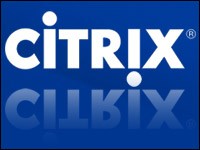
Red Hat announced Tuesday the release of the beta version of Red Hat Enterprise MRG (Messaging Real-time Grid). The open source developer’s latest offering is an add-on for its Red Hat Enterprise Linux and other third-party operating platforms used by financial organizations and government agencies. As the name implies, the software combines messaging, real-time and grid functionality.
“Enterprise MRG offers fundamentally new ways to deploy IT infrastructure,” said Brian Stevens, CTO and vice president of engineering at Red Hat. “Enterprise MRG is a dramatic example of the open source model offering significant advantages over proprietary technologies.
“We have collaborated to provide an open messaging standard for all customers and vendors to use, coupled with an incredibly powerful application deployment infrastructure and cutting-edge real-time capabilities,” he added.
The final version of Red Hat Enterprise MRG is scheduled for release in early 2008. Users can register for the beta at on the Red Hat Web site.
Faster, Better Red Hat Enterprise Linux
Red Hat Enterprise MRG continues the Linux automation strategy Red Hat announced in November, the goal of which is to enable any application to run anywhere, any time.
The software offers users the ability to run transactions and applications faster and at the same time provides new levels of quality-of-service, reliability, interoperability, standards support and system utilization, the company said.
With MRG, Red Hat has developed a revolutionary distributed computing platform that provides exceptional performance through reliable enterprise messaging, real-time capabilities and advanced grid and high-throughput computing technologies.
MRG’s durable messaging technology offers message performance that is as much as 100 times faster than other solutions, according to Red Hat. This messaging middleware is based on the Advanced Message Queuing Protocol (AMQP). It is the first time the technology has been used commercially and Red Hat will continue to work with the AMQP Working Group, also supported by Cisco and Novell, to create an open, interoperable standard for high-performance reliable messaging.
Real-time capabilities included in MRG provide low transaction latency and enabling applications to run with optimized and deterministic latency, thus ensuring that transactions run predictably under all workloads, Red Hat said. That means that CIOs will be able to match compute capacity to business demands and meet Quality-of-Service requirements at the same time.
However, although Red Hat uses the term “real time,” Gordon Haff, an analyst at Illuminata told LinuxInsider, “this is really more about predictable performance and high throughput for messaging than more traditional real-time applications.”
Grid, the final element, uses both scheduling and distributed computing for optimized performance. MRG’s scheduling capabilities allow enterprises to schedule large computing tasks across local grids, remote grids and so-called cloud capacity from Amazon EC2 and idle desktop workstations within the enterprise’s network.
Based on the University of Wisconsin’s Condor high-throughput computing project, MRG’s distributed computing functionality enables users to leverage the full power of distributed computing with commercial-strength grid capabilities, according to Red Hat. It will provide users with a practical means of using their total compute capacity with maximum efficiency and flexibility and at the same time improve the speed and availability of any application.




















































